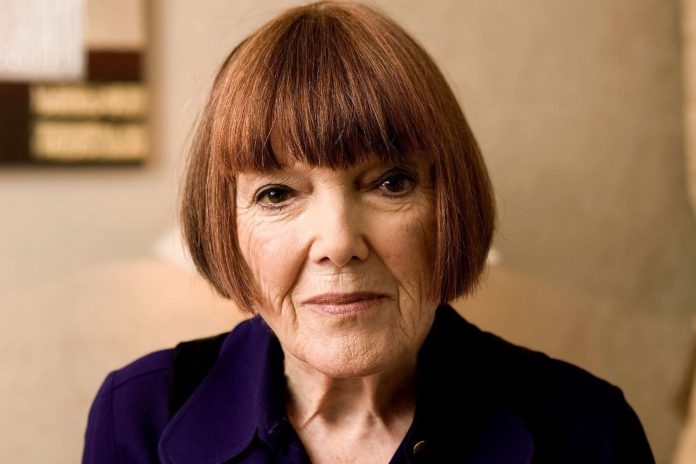
Dame Mary Quant, who transformed women’s fashion around the world in the ‘50s and ‘60s with her short hemlines and bold patterns, died Thursday, at 93 years old.
Quant, whose name was synonymous with London’s Swinging ’60s and its fashion, offered young women a new, more liberated way of dressing, free from the girdles and restrictive undergarments that their mothers and grandmothers had worn.
She popularized tights, making them in a rainbow of colors, and dressed a generation of women for work and play in her short “mini” skirts, HotPants and flat shoes.
Quant’s family said in a statement to Press Association that she died “peacefully at home” in Surrey, England, on Thursday.
Her family described Quant as “one of the most internationally recognized fashion designers of the 20th century, and an outstanding innovator of the Swinging ’60s.”
Quant was born in 1934 in Blackheath, southeast London, and studied art at Blackheath High School. She later attended Goldsmiths University in London, graduating in 1953.

Two years later, she opened Bazaar, a boutique on King’s Road. True to its name, the store sold a melange of items, from Quant’s own designs to artwork and jewelry made by her friends from university.
Frequented by stars including The Rolling Stones and Audrey Hepburn, Bazaar quickly became a hot spot thanks to its atmospheric setting paired with its revelatory items that were a far cry from the utilitarian, wartime styles of the ’40s.
In 2019, Quant was honored with a blue plaque outside 138A King’s Road, the original site of the boutique. The plaque’s unveiling took place during London Fashion Week that year.
In 1958, inspired by the Mini car, Quant gave her short skirts the name miniskirt. By 1961, Quant had opened another Bazaar in Knightsbridge, which was as successful as its predecessor, prompting global demand for her designs.
She exported what became known as the London Look to the U.S. through a deal with JCPenney. Her designs landed there in 1965, four years before The Beatles came.
The Museum at FIT’s director Valerie Steele described Quant as “certainly an iconic figure in the history of fashion and deserves to be.”
“She said, “The fact that the miniskirt keeps coming back as a fashion trend every few years is a testimony to how powerful that image was. She’s not the only one, who created it. But she was seminal in creating this image of it being a London and Youthquake development. That’s been entered into fashion history.”

Finding Mary Quant dresses today is no easy task, according to Steele. “I think it’s because people really wore her dresses to death. We have two in the collection, whereas with Courrèges and [Pierre] Cardin, you can get those clothes because people wore them for six months and stopped wearing them.
In her autobiography, Quant explained that adult appearance was unattractive to her and something that she knew that she didn’t want to grow into, Steele said. Always intent on “wanting the young to have a fashion of their own, and wanting to make clothes that would be fun to wear,” Quant started making such clothes for herself and others, she said.
“She didn’t really know how to do that. She said she took a few frantic evening classes and she had no idea that you could buy fabric wholesale. So she bought her material over the counter at Harrods, worked in her bedroom running up these little dresses with her Siamese cats eating the paper patterns. It was just totally chaotic.”
But as soon as those creations were placed in window displays, they sold out right away. After her clothes were featured in fashion magazines, Quant “seemed to have a really fast learning curve, just going onward and upward.” Steele said.
